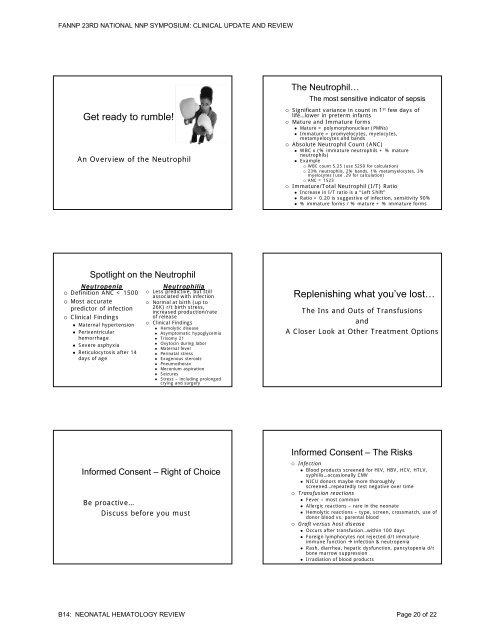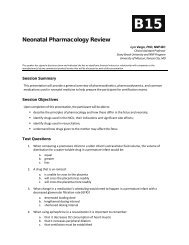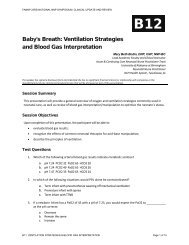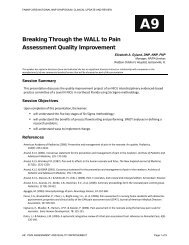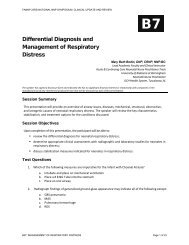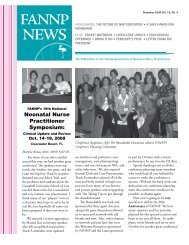Out for Blood: Neonatal Hematology Review - FANNP
Out for Blood: Neonatal Hematology Review - FANNP
Out for Blood: Neonatal Hematology Review - FANNP
You also want an ePaper? Increase the reach of your titles
YUMPU automatically turns print PDFs into web optimized ePapers that Google loves.
<strong>FANNP</strong> 23RD NATIONAL NNP SYMPOSIUM: CLINICAL UPDATE AND REVIEWGet ready to rumble!An Overview of the NeutrophilThe Neutrophil…The most sensitive indicator of sepsis◦ Significant variance in count in 1 st few days oflife…lower in preterm infants◦ Mature and Immature <strong>for</strong>ms• Mature = polymorphonuclear (PMNs)• Immature = promyelocytes, myelocytes,metamyelocytes and bands◦ Absolute Neutrophil Count (ANC)• WBC x (% immature neutrophils + % matureneutrophils)• Example◦ WBC count 5.25 (use 5250 <strong>for</strong> calculation)◦ 23% neutrophils, 2% bands, 1% metamyelocytes, 3%myelocytes (use .29 <strong>for</strong> calculation)◦ ANC = 1523◦ Immature/Total Neutrophil (I/T) Ratio• Increase in I/T ratio is a “Left Shift”• Ratio > 0.20 is suggestive of infection, sensitivity 90%• % immature <strong>for</strong>ms / % mature + % immature <strong>for</strong>msSpotlight on the NeutrophilNeutropenia◦ Definition ANC < 1500◦ Most accuratepredictor of infection◦ Clinical Findings• Maternal hypertension• Periventricularhemorrhage• Severe asphyxia• Reticulocytosis after 14days of ageNeutrophilia◦ Less predictive, but stillassociated with infection◦ Normal at birth (up to26K) r/t birth stress,increased production/rateof release◦ Clinical Findings• Hemolytic disease• Asymptomatic hypoglycemia• Trisomy 21• Oxytocin during labor• Maternal fever• Perinatal stress• Exogenous steroids• Pneumothorax• Meconium aspiration• Seizures• Stress – including prolongedcrying and surgeryReplenishing what you’ve lost…The Ins and <strong>Out</strong>s of TransfusionsandA Closer Look at Other Treatment OptionsIn<strong>for</strong>med Consent – Right of ChoiceBe proactive…Discuss be<strong>for</strong>e you mustIn<strong>for</strong>med Consent – The Risks◦ Infection• <strong>Blood</strong> products screened <strong>for</strong> HIV, HBV, HCV, HTLV,syphilis…occasionally CMV• NICU donors maybe more thoroughlyscreened…repeatedly test negative over time◦ Transfusion reactions• Fever – most common• Allergic reactions – rare in the neonate• Hemolytic reactions – type, screen, crossmatch, use ofdonor blood vs. parental blood◦ Graft versus host disease• Occurs after transfusion…within 100 days• Foreign lymphocytes not rejected d/t immatureimmune function infection & neutropenia• Rash, diarrhea, hepatic dysfunction, pancytopenia d/tbone marrow suppression• Irradiation of blood productsB14: NEONATAL HEMATOLOGY REVIEW Page 20 of 22


